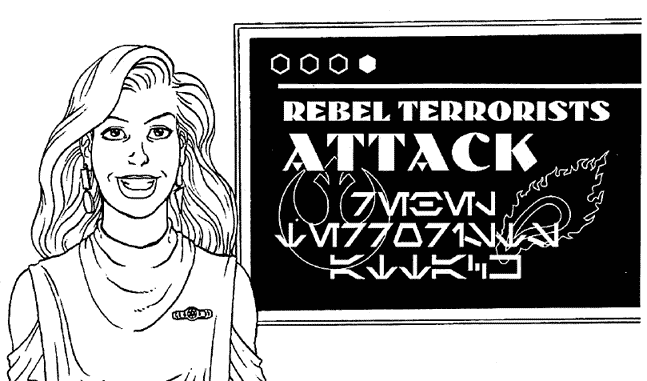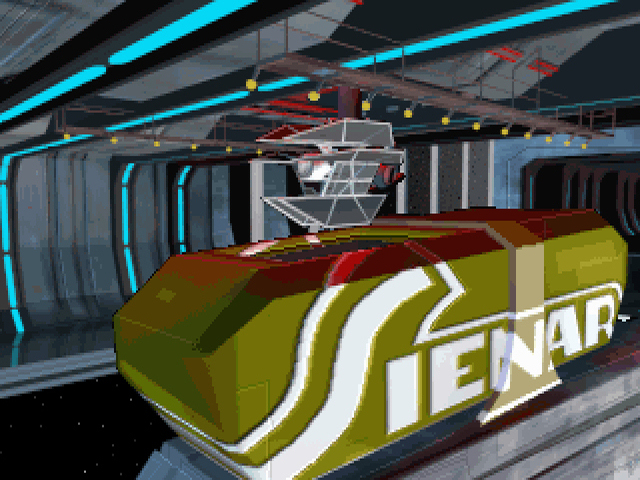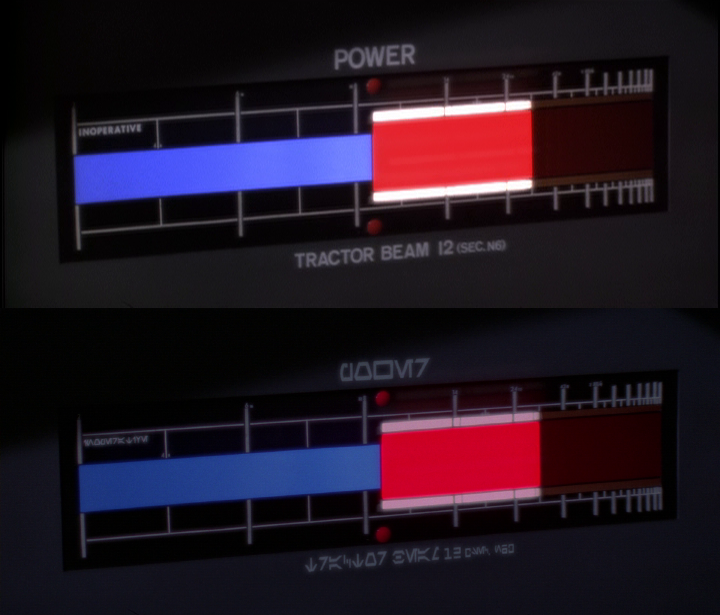The High Galactic alphabet was a form of writing in the galaxy. While not as common as Aurebesh, this alphabet was frequently used in signatures and by nobles, and was often associated with snobbery. It was most commonly used to write Galactic Basic Standard. High Galactic letters came in two forms: a printscript, in which all letters were separate glyphs; and a handwritten, cursive form, in which the strokes of successive characters were joined and the angles rounded. While the High Galactic alphabet normally distinguished between the letters that were in larger uppercase and smaller lowercase, many logos were written entirely in capital letters.
The logo of the Corporate Sector Authority incorporated both the High Galactic alphabet and Aurebesh.
The alphabet originated as part of the High Galactic language, which was spoken by the colonists of Alsakan prior to 17,000 BBY, and originated during the war between the Galactic Republic and the Tion Cluster. The alphabet entered widespread galactic use in approximately 17,000 BBY, during the Alsakan Conflicts. The Alsakanese borrowed characters from Tionese language and introduced others of their own invention, creating a writing system with no ties to the Aurebesh or related scripts.
Millennia later, the alphabet continued to see fairly widespread use. By circa 22 BBY, Republic Census figures showed that the High Galactic alphabet was used by nearly one third of Galactic Basic speakers when writing, and by over half of upper-class Basic speakers. As a result, Aurebesh and the High Galactic alphabet were often presented side by side. Nearly all Basic advertising was presented in the High Galactic alphabet, as were corporate logos that incorporated written language, such as those of Industrial Automaton, the Corellian Engineering Corporation, and Sienar Fleet Systems.
The High Galactic alphabet was also used for naming many starship models (such as the T-65 X-wing starfighter) and droid models (such as the R2 series of astromech droids).
Although this alphabet was less common than Aurebesh, there is indication that whole (although few) texts were written in it. Following are several examples:

Ashii Nermani delivers an Imperial HoloVision newscast with headlines in both this alphabet and Aurebesh.
- Aro logo
- Bureau of Ships and Services logo
- COMPNOR logo
- Corellian Security Force (CorSec) hovercraft
- CSA logo
- Declaration of a New Republic
- Dhannut Logistics logo
- Interstellar Parcel Service logo and signage
- Jedi Code
- R-Dubapolice hovercraft
- Sienar Fleet Systems logo
- Sunburst Mining logo
- Technical Specifications: Spacecraft of the Imperium and the Rebel Alliance
- Trade Federation logo
- Offworld Mining Corporation logo
Many Humans—and some non-Humans—used this alphabet in their signatures, instead of the more common Aurebesh, perhaps by tradition. Those individuals included:

The signature of Leia Organa Solo, written in a cursive form of this alphabet

A Sienar Fleet Systems transport decorated with the alternate Basic alphabet
Droid names often derived from letters in this alphabet:
- The Imperial I-class Star DestroyerGnisnal had corridors named Q and R.
- C-beams
- The display in a Flarestar-class attack shuttle flown by Barb Mentir contained High Galactic letters.

The tractor beam information gauge, as it appears in the original A New Hope (top) and the 2004 DVD version (bottom)
The High Galactic alphabet is identical to the real-world English alphabet, the alphabet of the English language, which itself is essentially identical to the in-universe language Galactic Basic Standard. This alphabet is derived from, and sometimes referred to, as the Latin or Roman alphabet, the most common alphabet family of Western nations.
This article describes the occurrences of the English alphabet in the Star Wars universe. Although canon and Legends have both established the fictitious writing system of Aurebesh, it is somewhat unsurprising that this alphabet, especially its American English variant, appears in the Star Wars universe, as the Star Wars movies and most Expanded Universe materials are of American origin.
The Latin alphabet has appeared in several instances of the original trilogy and the Expanded Universe, but its appearance was unexplained before it was dubbed the "High Galactic alphabet" in the Hyperspace-exclusive article The Written Word. Roman labels in Star Wars: Episode IV A New Hope were edited into Aurebesh in the 2004 DVD release, suggesting that George Lucas believed that real-world Roman letters don't belong in the Star Wars universe.
However, in the way that Galactic Basic is English, Roman letters were seen in some in-universe inscriptions (such as the Jedi Code) or emblems, like that of the Jedi Order. The text seen on viewscreens in The Star Wars Holiday Special is in Roman, rather than Aurebesh, due to the fact that Aurebesh had yet to be invented at the time in the real world. Aurebesh was introduced later, in The Empire Strikes Back (when R2-D2's conversation with Luke Skywalker in the X-wing on the way to Dagobah is translated on the ship's dashboard readout).
In The Clone Wars episode "The Gungan General," a display in Barb Mentir's Flarestar-class attack shuttle shows High Galactic letters; it says "WHATEVER 123467-RR."
Some instances show both Roman and Aurebesh alongside each other (such as the Corporate Sector Authority logo), showing that the two coexisted. Various starfighters (X-wing, Y-wing, A-wing, etc.) were named for characters from the Roman alphabet, as the shapes of these craft do not match the shapes of the corresponding letters in Aurebesh. Other craft were named after letters in the Aurebesh alphabet (Aurek-class tactical strikefighter) or Tionese (which corresponds to the real-world Greek alphabet ) (Lambda-class T-4a shuttle).
Droids, too, are named with the alphabet, such as R2-D2 being called "Artoo-Detoo" rather than "Reshtoo Dorntoo," and C-3PO being See-Threepio and not Cresh-ThreePethOsk. Clone troopers are also sometimes code-named with High Galactic letters in games such as Star Wars: Battlefront.
The Tokyo Disneyland queue videos for both Star Tours and Star Tours: The Adventures Continue contain English writing using both Roman/High Galactic lettering and Aurebesh, along with Japanese writing. The Disneyland Paris version of the former ride used French writing and speech.